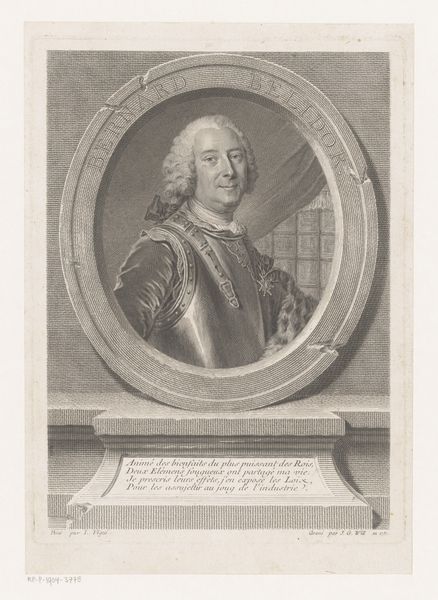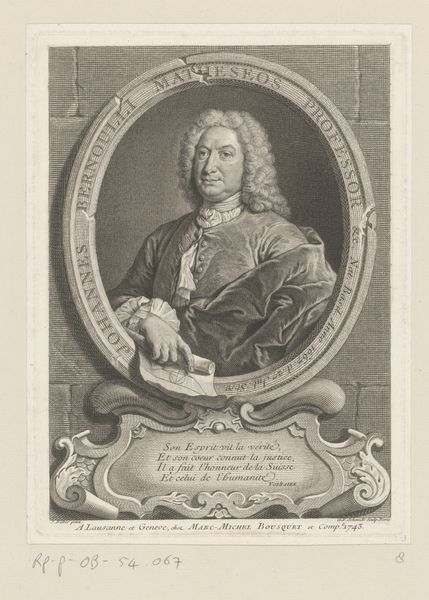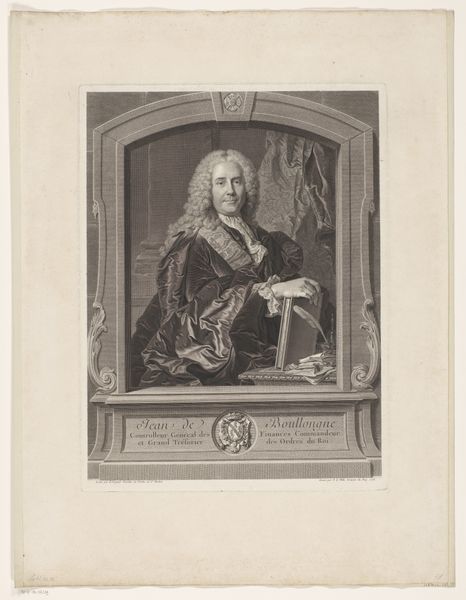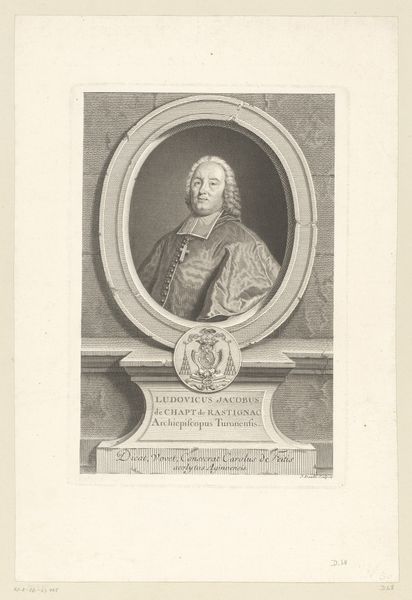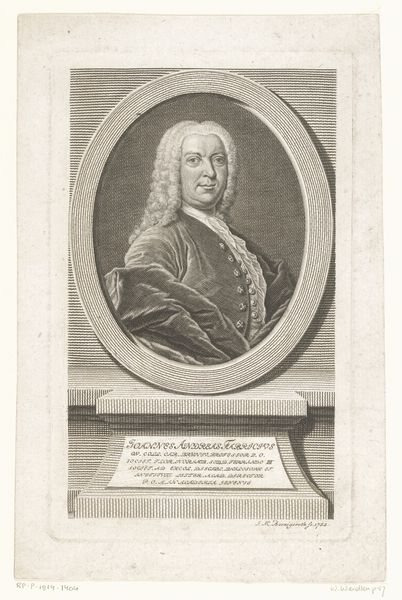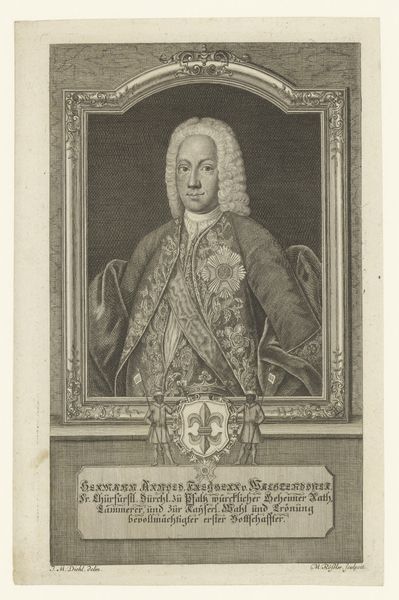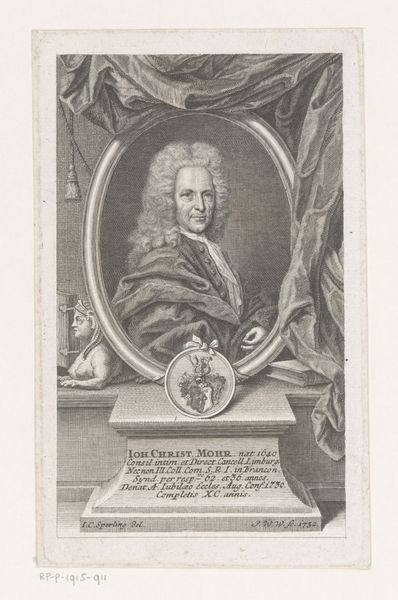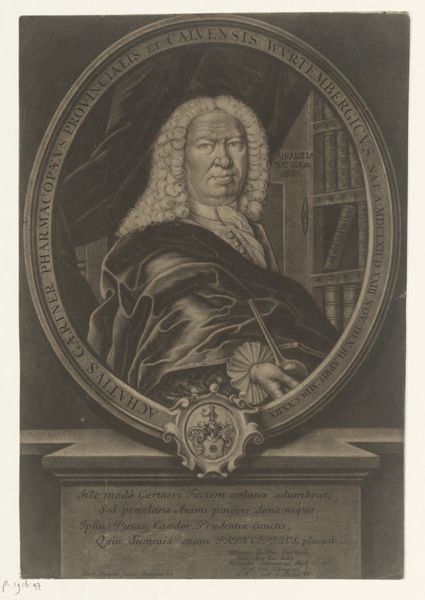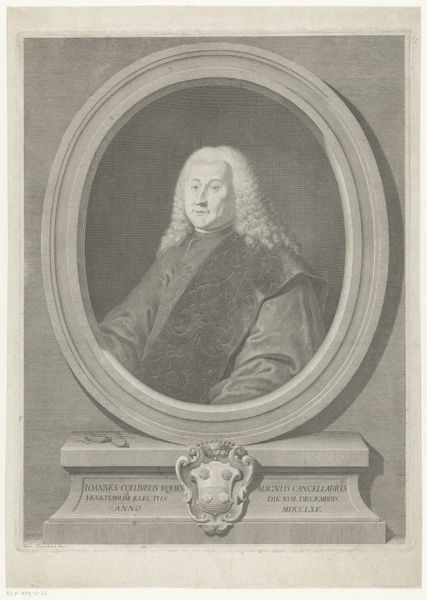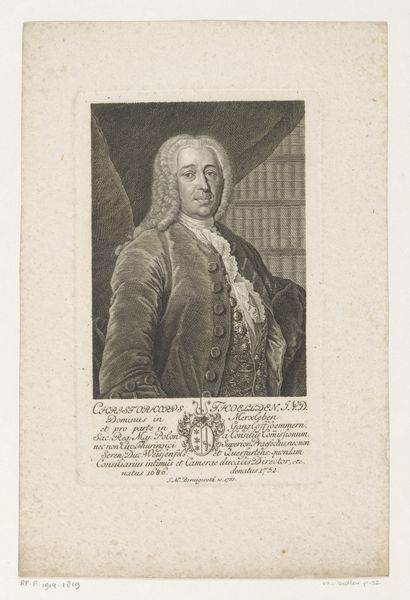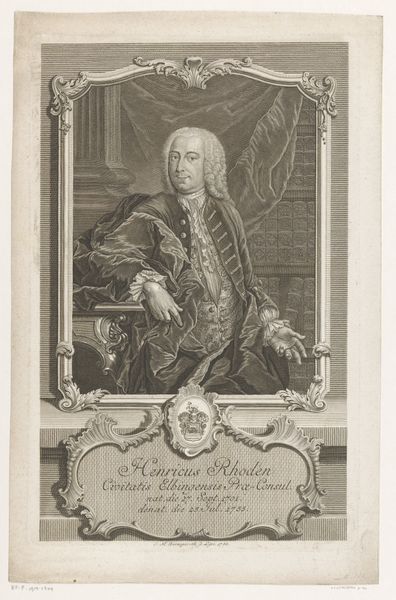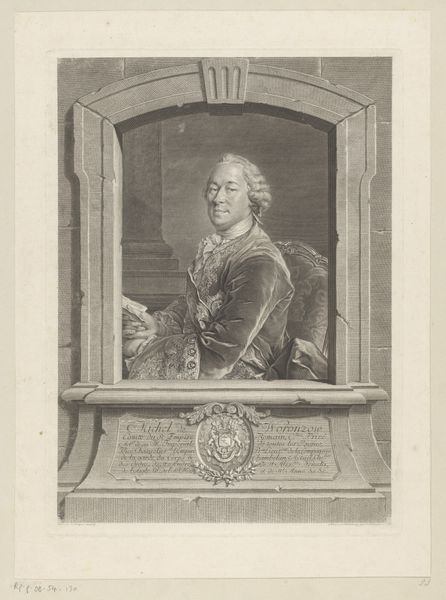
engraving
#
portrait
#
baroque
#
19th century
#
history-painting
#
engraving
Dimensions: height 297 mm, width 203 mm
Copyright: Rijks Museum: Open Domain
Jean Daullé created this engraving, "Portret van Manuel Pinto da Fonseca" around 1744. Daullé was a product of his time, an engraver to the King, and this work reflects the social and political order of 18th century Europe. The portrait depicts Manuel Pinto da Fonseca, a Portuguese nobleman who became the Grand Master of the Knights Hospitaller, a Catholic military order. Pinto's identity as a leader is carefully constructed here. His gaze and posture denote power, and his clothing signifies his high status. The symbols of the Knights Hospitaller speak to a history of religious and military power, reflecting the order’s influence in the Mediterranean. However, let's think about the unseen aspects of this portrait: the complex dynamics of class and power, the religious tensions of the era, and the individuals excluded from this world of nobility. This portrait provides a glimpse into the life and identity of a powerful man, while also inviting us to reflect on the broader structures of society in the 1700s. What does it mean to immortalize someone in this way, and whose stories remain untold?
Comments
No comments
Be the first to comment and join the conversation on the ultimate creative platform.
